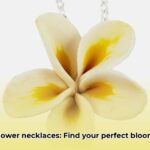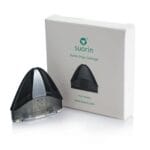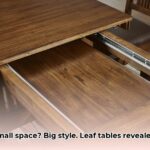Drop-leaf tables are the epitome of adaptable furniture. They effortlessly transform from compact consoles to spacious dining tables, making them an ideal choice for modern homes where space is a precious commodity. This comprehensive guide delves into the world of drop-leaf tables, exploring various styles, materials, functionalities, and essential purchasing considerations to help you find the perfect piece for your home.
Unlocking the Versatility of Drop-Leaf Tables
The resurgence in popularity of drop-leaf tables is no accident. Their inherent adaptability makes them perfect for smaller homes, apartments, studios, or even multi-functional spaces. Picture a sleek console table against the wall, ready to expand into a dining table for six in minutes. This inherent versatility is a key driver in today’s furniture market, where consumers prioritize both space optimization and stylish design. But with an overwhelming array of options, how do you navigate this furniture landscape and select the ideal drop-leaf table for your unique needs? Let’s explore the crucial factors to consider.
Decoding Drop-Leaf Table Types: A Spectrum of Styles
From intimate breakfast nooks to expansive dining areas, the world of drop-leaf tables offers a design for every lifestyle. Here’s a breakdown of the key categories:
Size and Seating Capacity: Drop-leaf tables come in a wide range of sizes, catering to everything from solo dining to large family gatherings. Before purchasing, meticulously measure your available space, considering both the table’s collapsed and expanded dimensions. Think about how many people you regularly need to accommodate. Do you frequently host dinner parties, or is it primarily for everyday meals?
Materials and Durability: The material you choose significantly impacts your table’s longevity and aesthetic appeal. Solid wood, like oak or maple, exudes timeless elegance and durability. Metal options, such as wrought iron or steel, offer a modern, industrial vibe and exceptional strength. Glass-top tables introduce a touch of sophistication and airiness, but require more careful handling. Consider your existing décor, lifestyle, and desired level of maintenance when selecting the material.
Style and Aesthetics: Whether your style gravitates towards traditional, modern, farmhouse, or mid-century modern, there’s a drop-leaf table to perfectly complement your aesthetic. Traditional designs often feature ornate carvings, rich wood tones, and classic silhouettes. Modern tables embrace clean lines, minimalist aesthetics, and materials like glass or metal. Farmhouse styles showcase rustic charm, distressed finishes, and natural wood grains. Carefully consider your existing décor and personal style to create a cohesive and harmonious look.
Functionality and Features: Beyond the basic drop-leaf mechanism, consider additional features that enhance functionality. Built-in storage drawers or compartments can neatly house extra leaves, linens, or placemats. Some tables even incorporate extension mechanisms that allow for even greater expansion. Think about your specific needs and how these added features can contribute to the table’s overall practicality.
The Definitive Drop-Leaf Table Buying Guide: Essential Considerations
Navigating the vast selection of drop-leaf tables can be daunting, but this comprehensive checklist streamlines the decision-making process:
Precise Space Measurement: Accurate measurements are paramount. Measure not just the table’s footprint when fully extended, but also its dimensions when folded down. Consider traffic flow and ensure ample space for chairs when the table is in use.
Strategic Material Selection: Choose a material that aligns with both your style and practical needs. Wood offers warmth and classic appeal, but may require more maintenance. Metal provides exceptional durability and a modern aesthetic. Glass adds elegance and a sense of spaciousness, but necessitates careful handling.
Optimal Size Determination: Consider how many people you need to seat regularly and for special occasions. Measure your dining area to determine the maximum table size that will comfortably fit. Visualize the table in both its expanded and collapsed states to ensure it meets your space requirements.
Harmonious Style Matching: Select a drop-leaf table that seamlessly integrates with your existing décor. Consider the style of your dining chairs, other furniture pieces, and overall room aesthetic. A cohesive design creates a sense of harmony and visual appeal.
Realistic Budgeting: Establish a budget range before you begin your search. Drop-leaf table prices can vary significantly based on size, material, brand, and features. Setting a budget helps narrow down your options and prevents overspending.
Smart Storage Solutions: Decide whether built-in leaf storage is essential or if separate storage is feasible. Built-in storage keeps the extra leaves readily accessible and organized. If space is limited, this feature can be a game-changer.
Sourcing Your Perfect Drop-Leaf Table: Where to Look
Finding your ideal drop-leaf table is easier than ever, thanks to a variety of retail options. Online marketplaces like Amazon and Wayfair offer vast selections and convenient shopping experiences. Brick-and-mortar furniture stores provide the opportunity to examine tables in person, assess their quality, and test the leaf mechanisms. For unique vintage finds, explore local antique shops, consignment stores, or estate sales.
Beyond the Basics: Enhancing Durability and Functionality
Selecting the right drop-leaf table extends beyond size, style, and material. Here are additional factors to consider:
Durability and Construction: A well-built table should withstand daily use and retain its structural integrity for years to come. Look for sturdy construction, quality joinery, and durable hardware. Check for any signs of wobbling or instability.
Maintenance and Care: Different materials require varying levels of maintenance. Wood may need periodic polishing or oiling to maintain its luster. Metal might require occasional cleaning to prevent rust or corrosion. Glass requires careful handling to prevent scratches or chips. Consider the level of maintenance you’re willing to undertake.
Smooth Leaf Mechanism: A smooth and reliable leaf mechanism is crucial for seamless expansion and collapse. Test the mechanism in person, if possible, to ensure it operates smoothly and locks securely in place. Look for high-quality hardware and a robust design that can withstand repeated use.
- Discover Long Black Pepper: Flavor & Health Benefits - April 25, 2025
- Shocking Twists: The Grownup Review: Unreliable Narration - April 25, 2025
- A Quiet Place Book vs Movie: A Deep Dive - April 25, 2025















